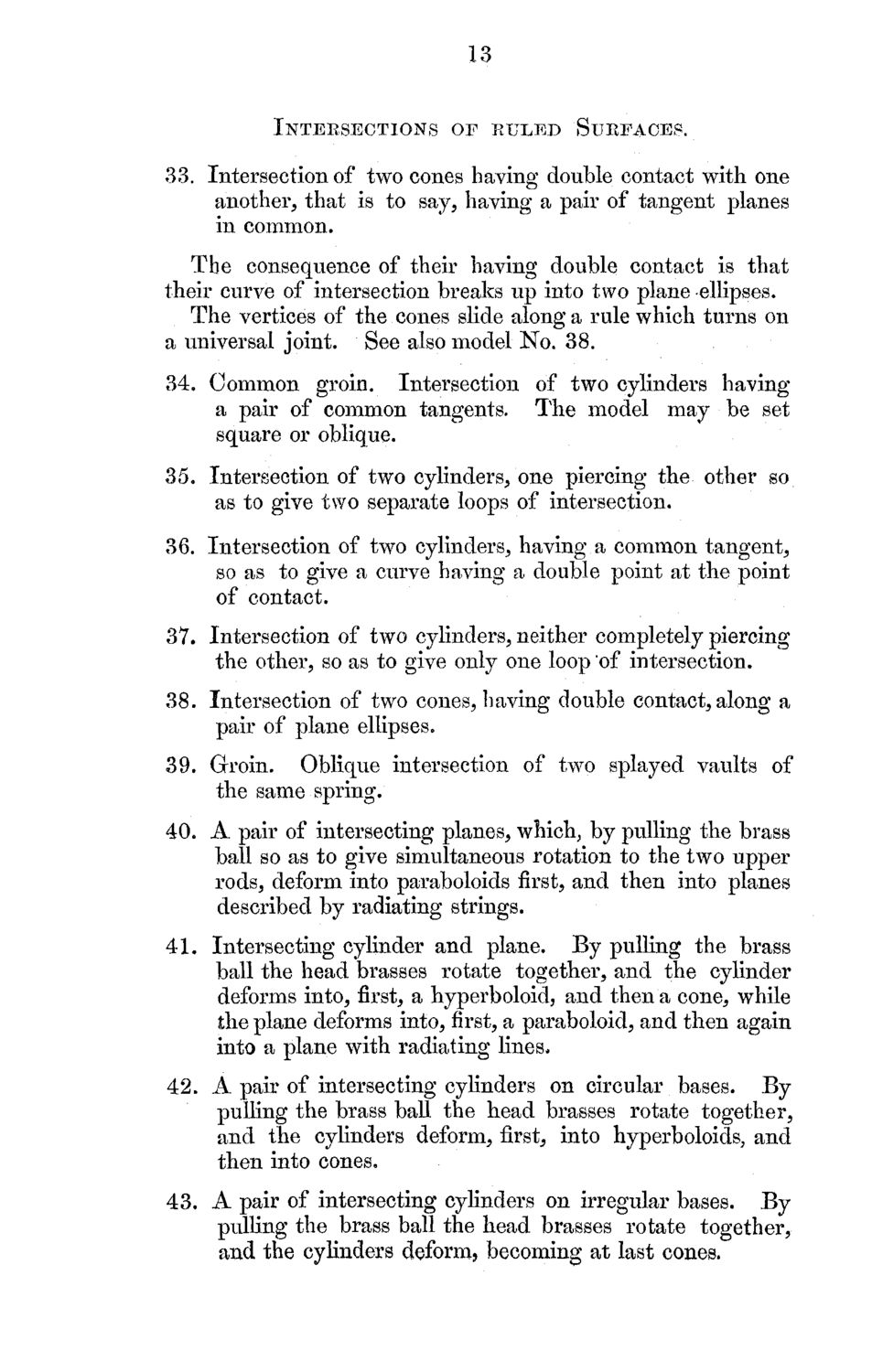| |
| |
Caption: Mathematical Models Catalog of a Collection of Models of Ruled Surfaces
This is a reduced-resolution page image for fast online browsing.

EXTRACTED TEXT FROM PAGE:
13 Intersections of ruled Surfaces. 33. Intersection of two cones having double contact with one another, that is to say, having a pair of tangent planes in c o m m o n . The consequence of their having double contact is that their curve of intersection breaks u p into two plane ellipses. T h e vertices of the cones slide along a rule which turns on a universal joint. See also model N o . 38. 34. Common groin. Intersection of two cylinders having a pair of c o m m o n tangents. T h e model m a y be set square or oblique. 35. Intersection of two cylinders, one piercing the other so as to give two separate loops of intersection. 36. Intersection of two cylinders, having a common tangent, so as to give a curve having a double point at the point of contact. 37. Intersection of two cylinders, neither completely piercing the other, so as to give only one loop of intersection. 38. Intersection of two cones, having double contact, along a pair of plane ellipses. 39. Groin. Oblique intersection of two splayed vaults of the same spring. 40. A pair of intersecting planes, which, by pulling the brass ball so as to give simultaneous rotation to the two upper rods, deform into paraboloidsfirst,and then into planes described by radiating strings. 41. Intersecting cylinder and plane. By pulling the brass ball the head brasses rotate together, and the cylinder deforms into,first,a hyperboloid, and then a cone, while the plane deforms into,first,a paraboloid, and then again into a plane with radiating lines. 42. A pair of intersecting cylinders on circular bases. By pulling the brass ball the head brasses rotate together, and the cylinders deform,first,into hyperboloids, and then into cones. 43. A pair of intersecting cylinders on irregular bases. By pulling the brass ball the head brasses rotate together, and the cylinders deform, becoming at last cones.
| |